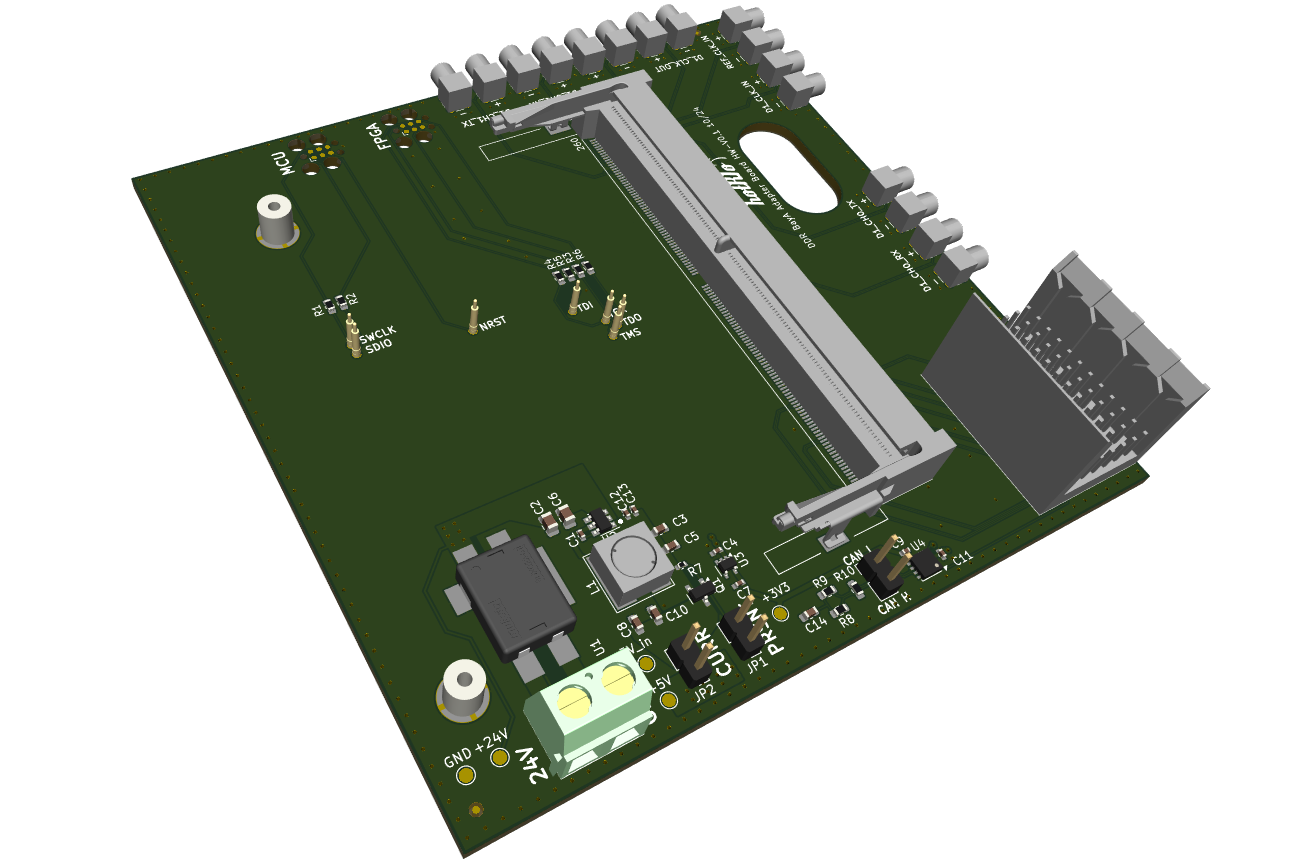HotRIO F-HET-MAC (Macaco)
Datasheet for this product available here
The F-HET-MAC (Macaco) is a HotRIO Eurocard tooling board designed to facilitate firmware development and testing for HotRIO-based products. It integrates a SO-DIMM DDR4 slot for connecting an F-HSC-DDR Eurocard controller module and provides a single Eurocard Type A slot, simulating a minimal Eurocard chassis environment. This allows developers to prototype and test Eurocard expansion boards without assembling a full chassis, streamlining the development process.

Key features
Integrates SO-DIMM DDR4 slot for F-HSC-DDR Eurocard controller module
Provides a single Eurocard Type A slot for expansion board development and testing
Direct signal routing between DDR module and Type A slot
MMCX connectors for probing LVDS pairs from the DDR module
Technical Specifications
Form factor |
100x100 mm |
Controller interface |
SO-DIMM DDR4 slot (for F-HSC-DDR module) |
Expansion slot |
1 × Eurocard Type A slot |
Signal probing |
MMCX connectors for selected LVDS pairs |
CAN interface |
CAN transceiver for expansion slot, accessible via dedicated connector |
Power supply |
24V DC (via dedicated supply connector) |
Power from backplane |
Not supported |
The board features direct signal routing between the DDR4 controller module and the Type A slot, with no onboard FPGA or programmable logic. Additional MMCX connectors are provided for probing selected LVDS pairs from the DDR module, supporting advanced debugging and timing analysis. The board also includes a CAN transceiver for the expansion slot, accessible via a dedicated connector for external monitoring. Power is supplied via a dedicated 24V input connector; the board cannot be powered through the backplane.
The DDR module installed in the SO-DIMM DDR4 slot is designed to serve as a direct substitute for a traditional HotRIO controller board within a Eurocard chassis. Instead of using a standard controller, this board allows the DDR module to directly interface with and control an expansion board inserted into the Eurocard Type A backplane slot. This configuration enables streamlined signal routing and control, eliminating the need for onboard FPGA or programmable logic while maintaining compatibility with existing Eurocard-based systems.